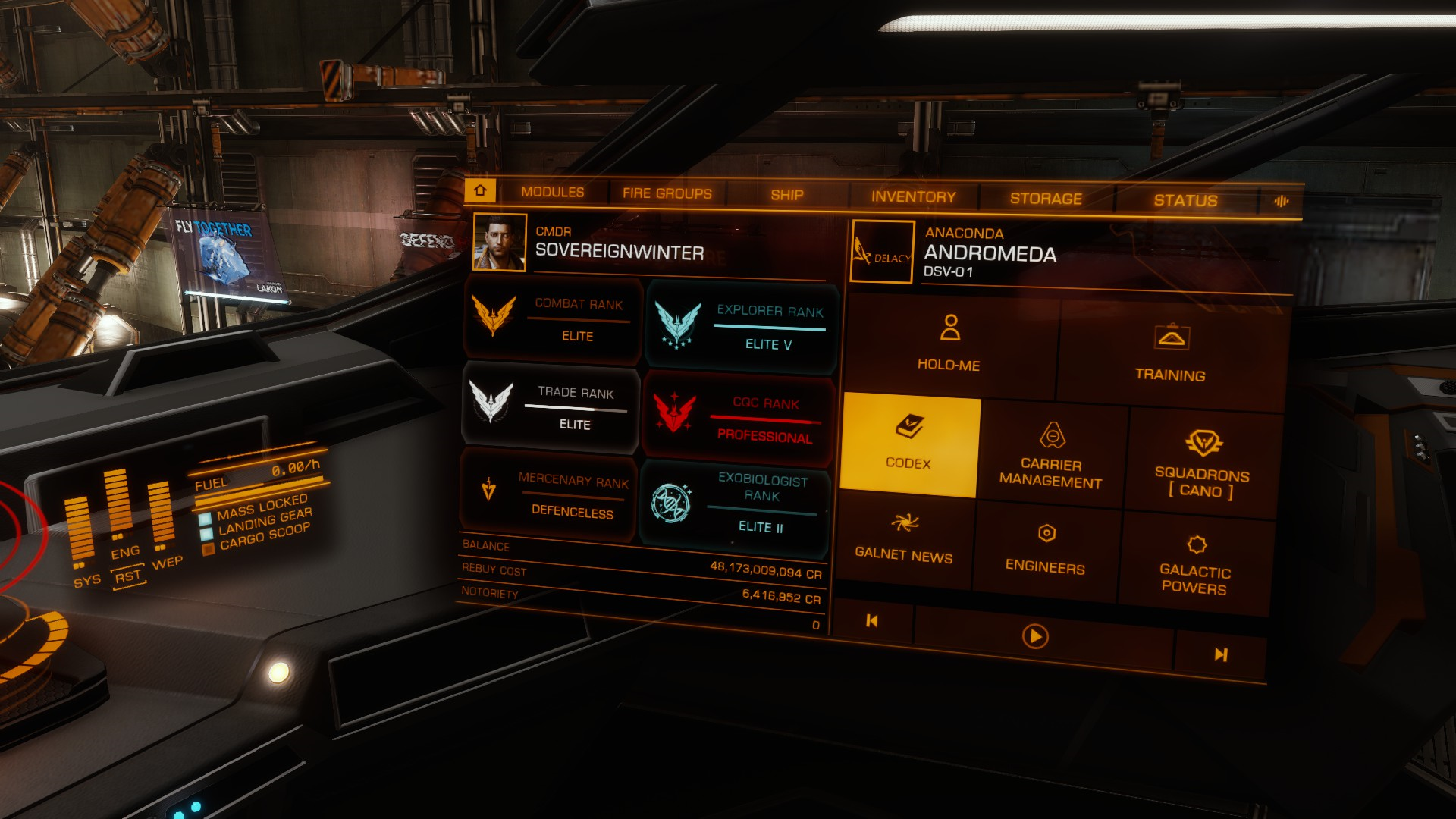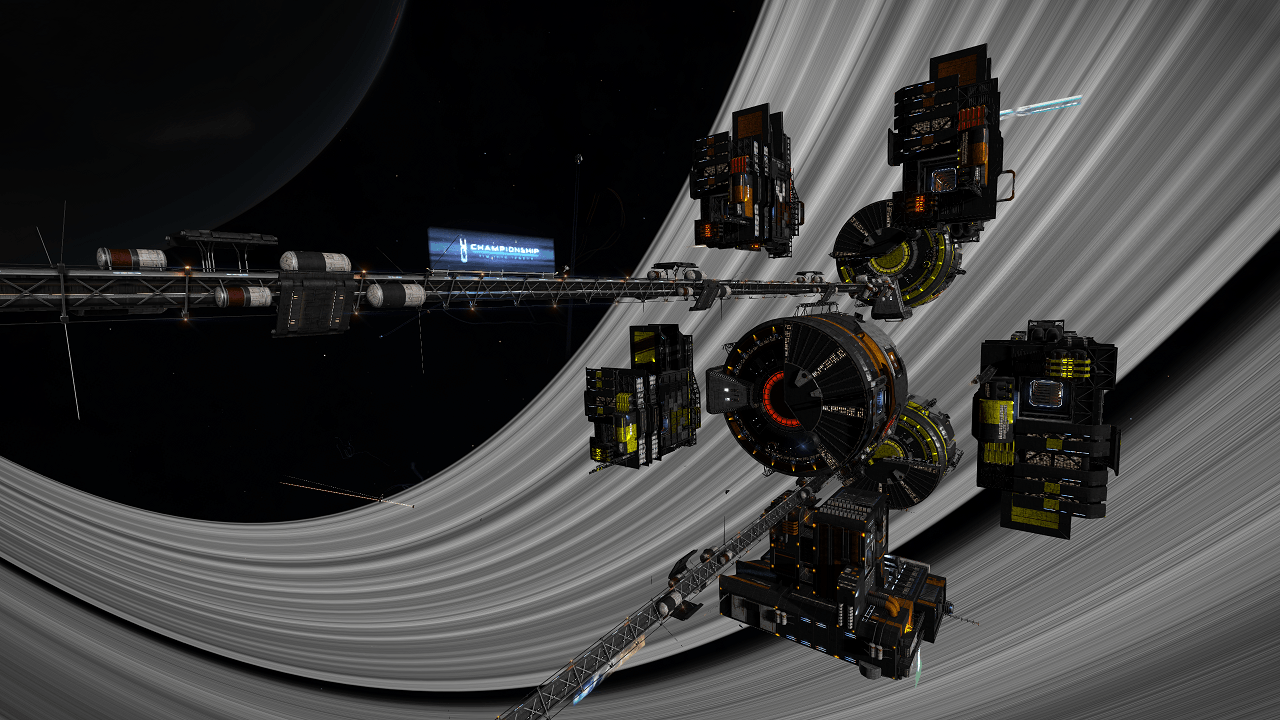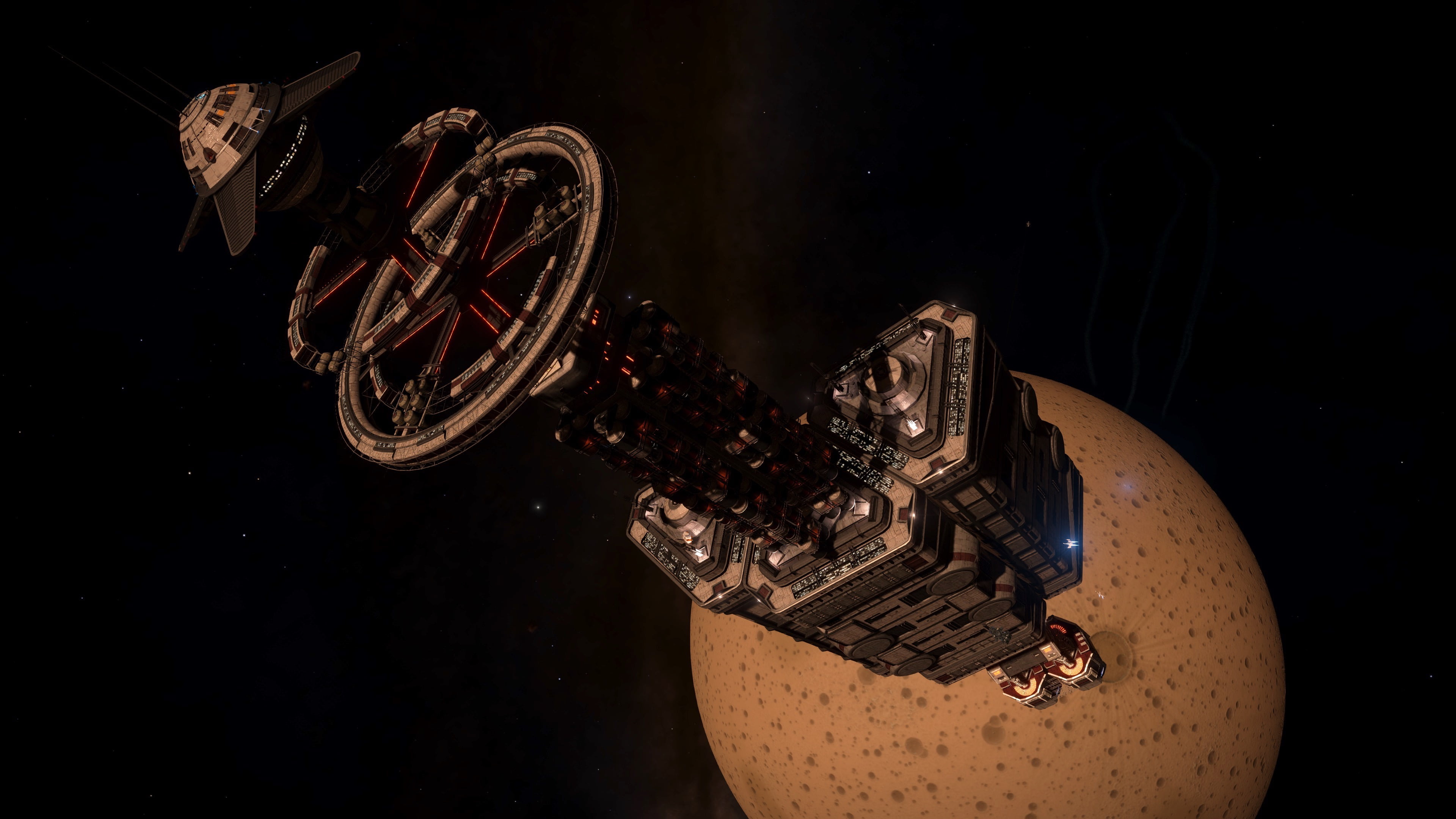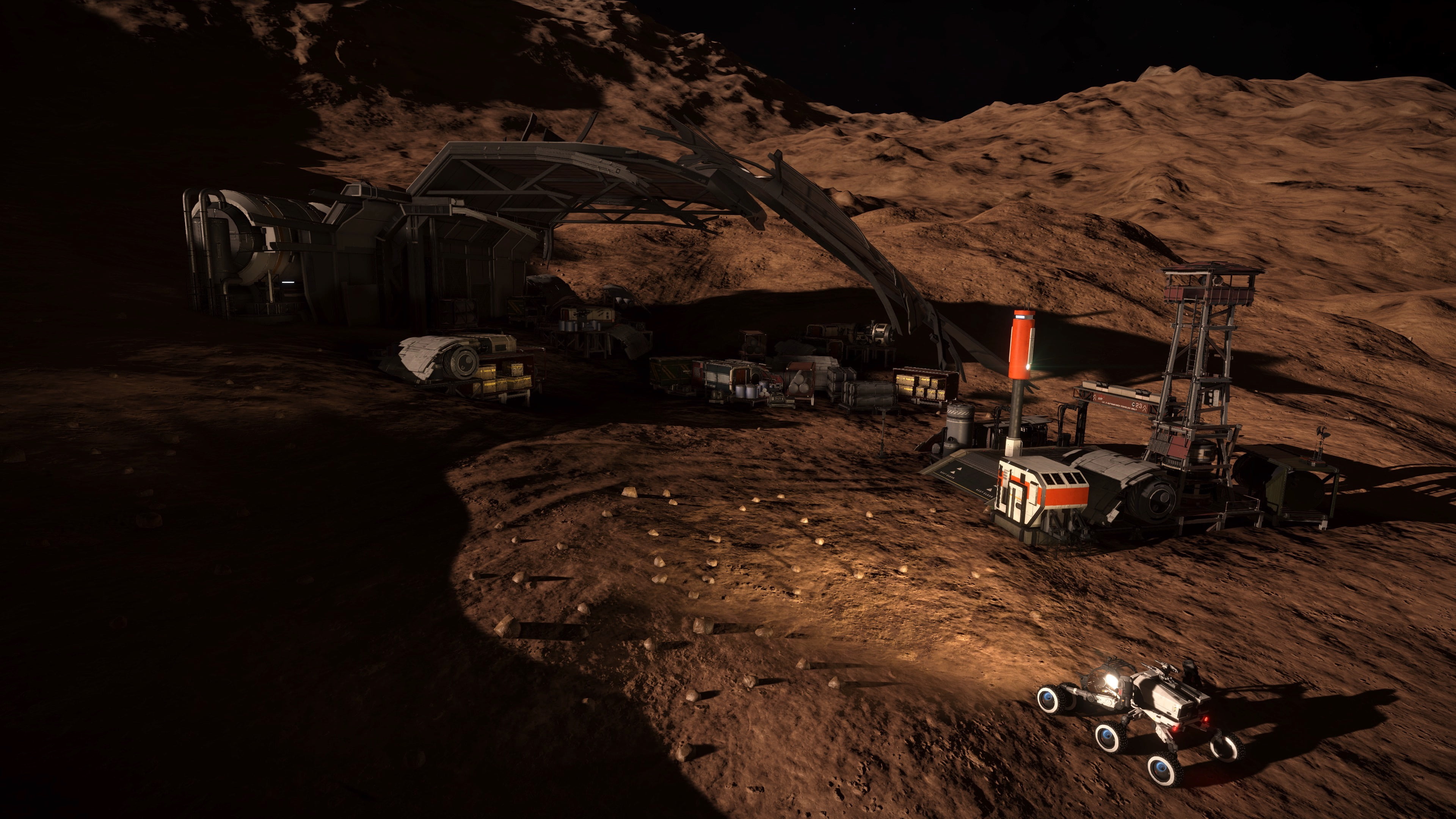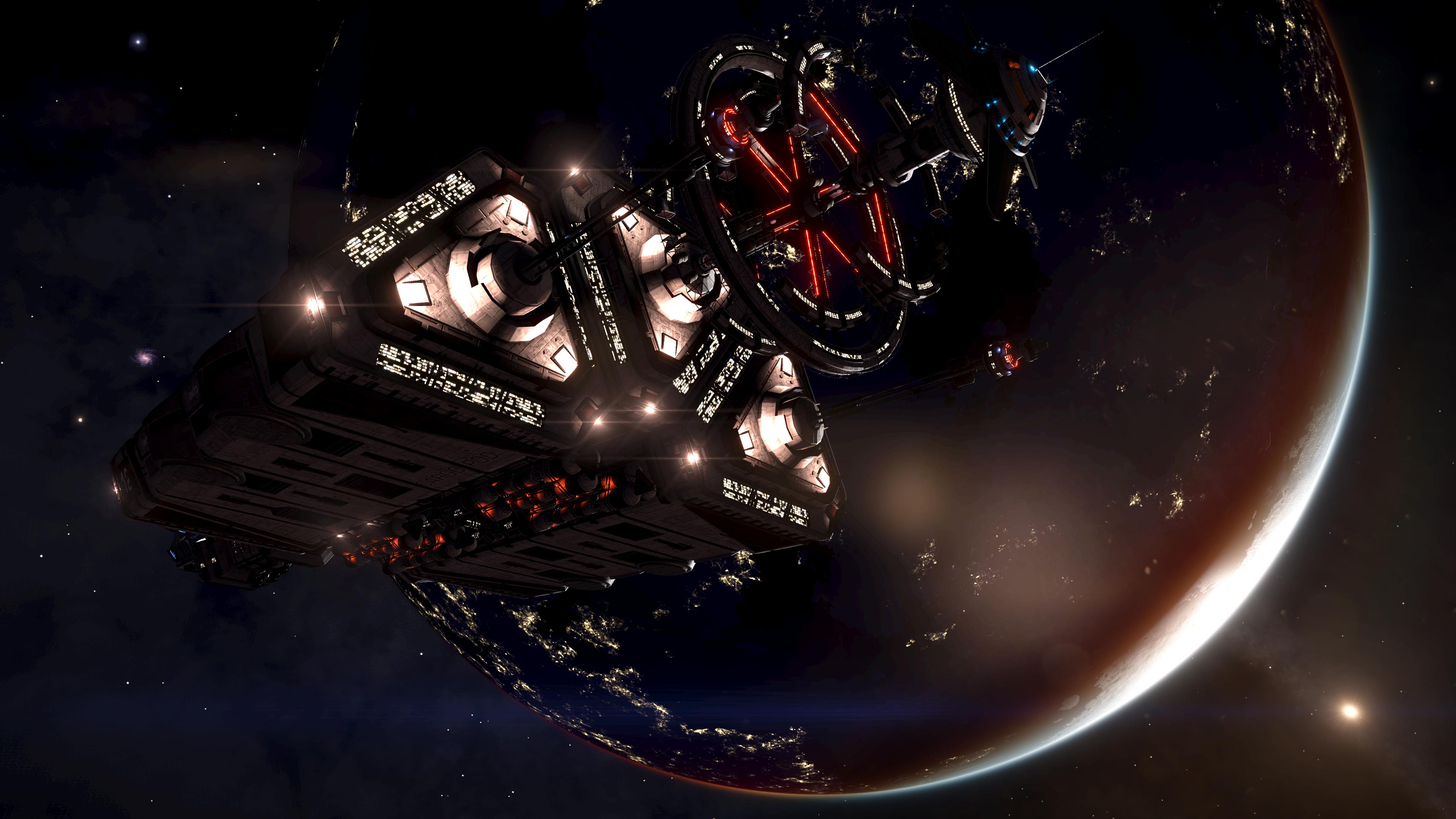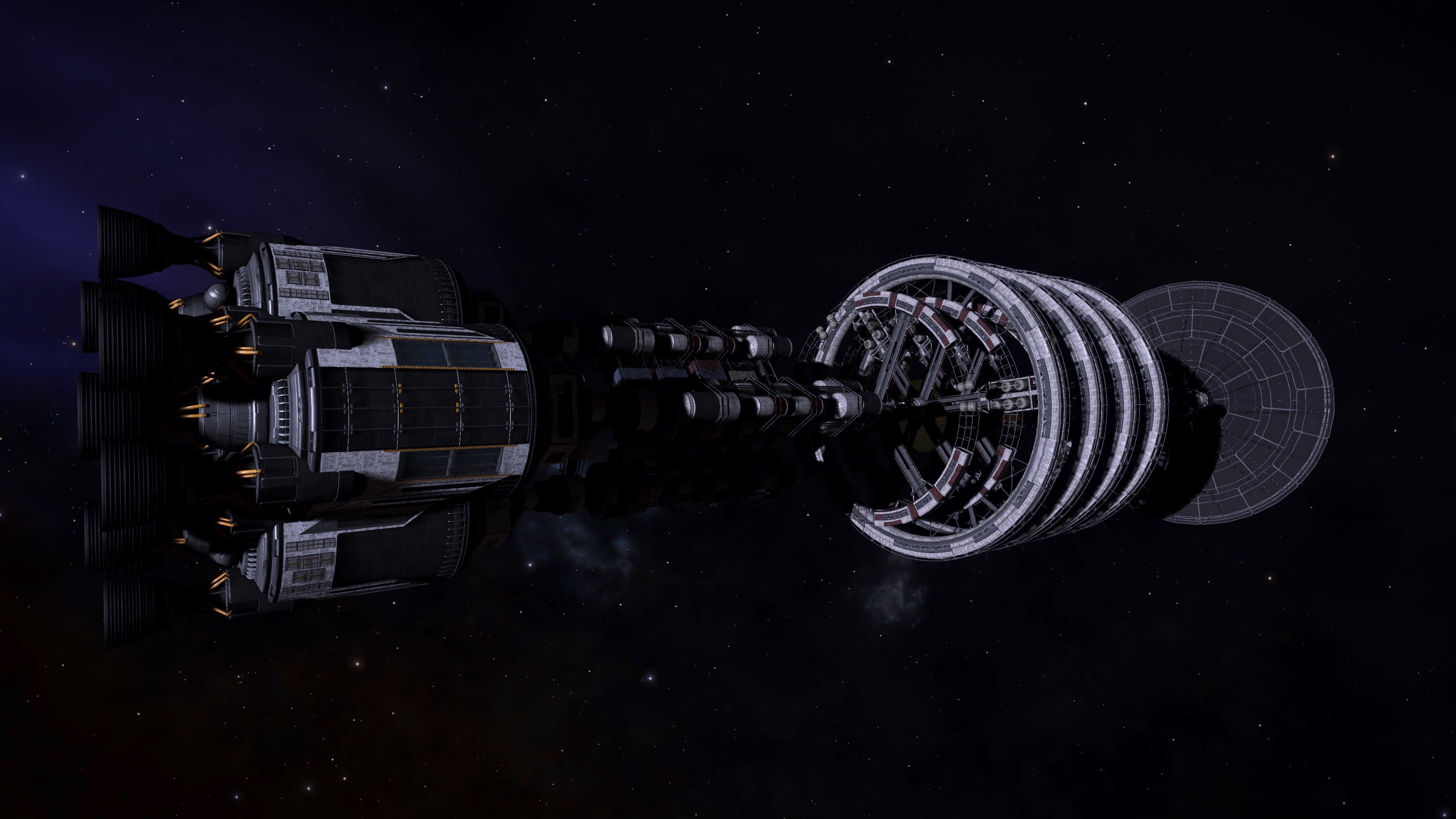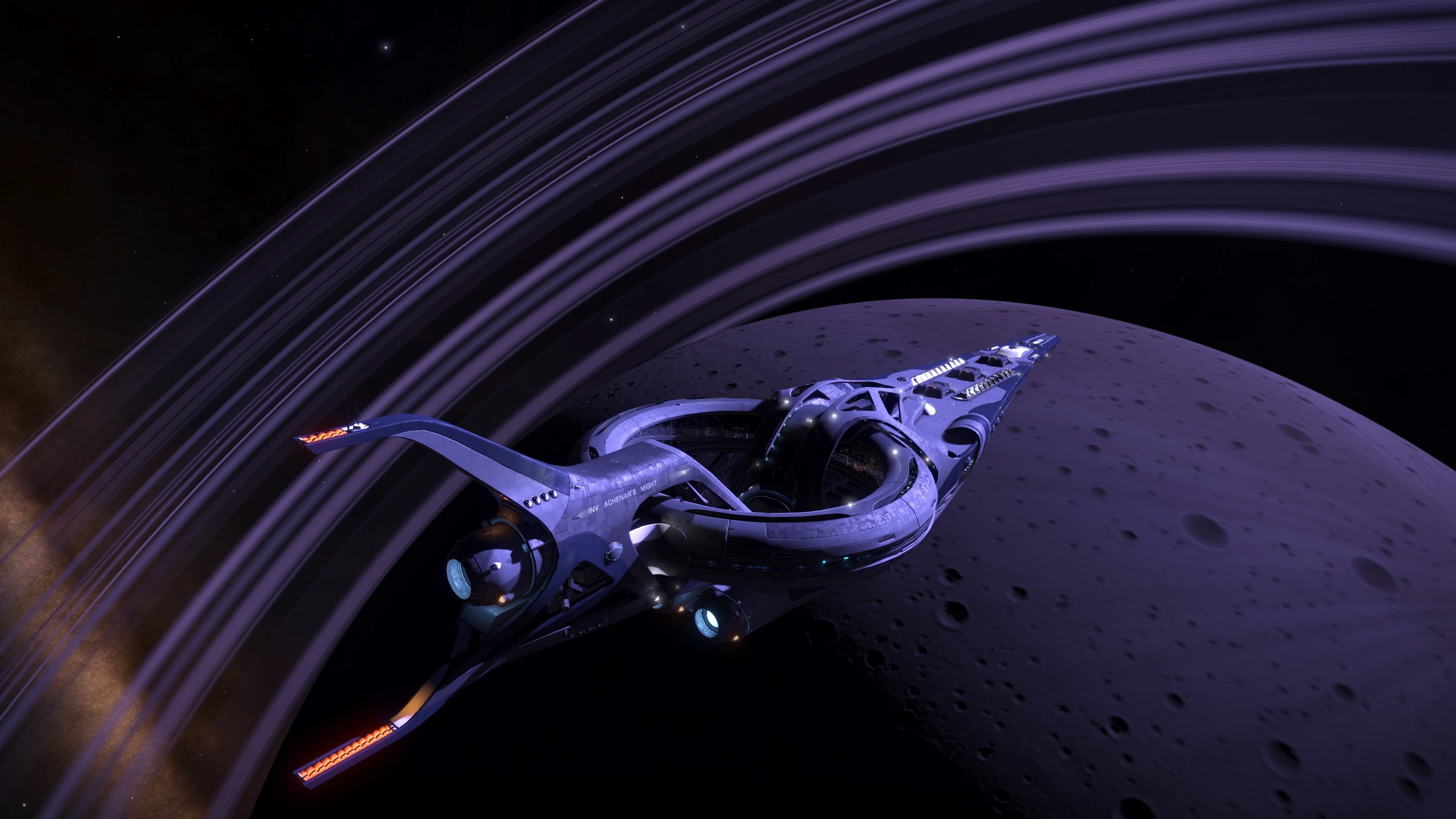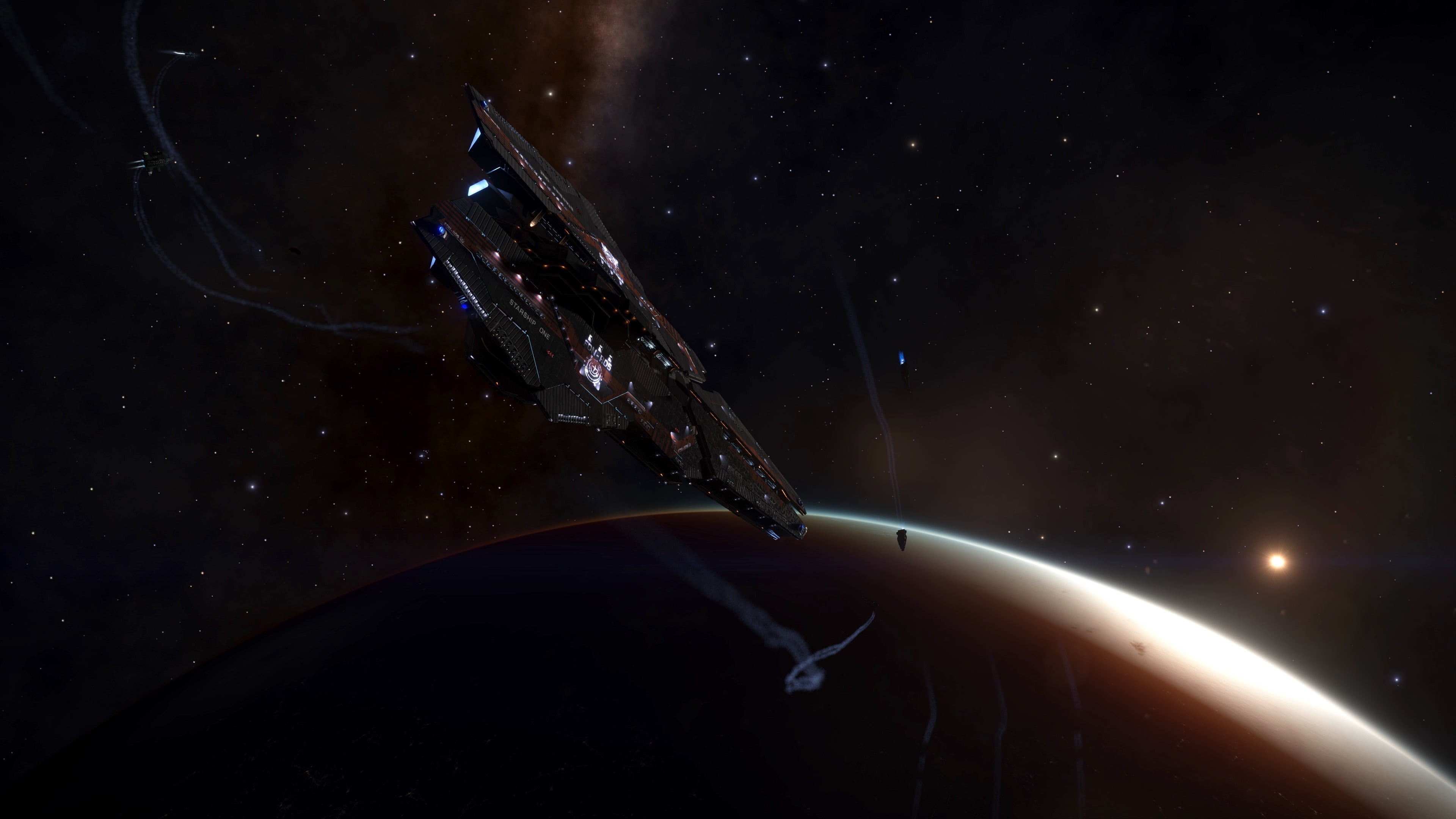A paper by Prof. Sindri Arcturus, Director of the Freeman Dyson Institute.
The aim of this document is to provide a basic, generalized overview of topics which are relevant to the science of Elite: Dangerous. The goal here is not to delve too deeply into the topics, or to expound on the subtleties or sub-topics which deserve considerably more detail and attention than could be given here; rather, the objective is to provide a starting-point from which one can then move on to those more advanced topics in the future, and establish the background knowledge necessary to do basic science-related work.
This is intended for members of the Canonn Interstellar Research Group and its various affiliates, in order to promote the sciences and improve the overall quality of science being done within the Elite: Dangerous community.
What is covered here includes:
1 – Scientific Method
1.1 Hypothesis/Theory
1.2 Scientific Laws
1.3 Applications
2 – Life and its Signs
3 – Sciences of Elite

1 – Scientific Method
1.1 – Hypothesis and Theory
In the physical sciences, terminology is everything. Using the wrong terminology for a thing leads to misunderstanding of that thing, and promotes further use (and misunderstanding) by others. Vocabulary is the basis for the propagation of ideas: if one lacks the words to correctly convey or describe a concept, then elements will be lost. The first of these misconceptions which needs to be cleared up is the difference between the terms theory, hypothesis, and guess. We will also introduce more terms which are related, and will help you in the future.
A guess is when a person supposes that something might be a certain way. The technical term which should be used instead of ‘guess’ in an academic setting is conjecture, which means “a supposition based on incomplete information”. In a casual sense, one could also use the term educated guess, provided that person had sufficient background information to assume that the thing ought to be the way they that suppose it might be – but it remains a guess (and unproven) all the same. Conjectures lack formal clarification, though they might be considered as a potential for a hypothesis.
A hypothesis might be seen as a ‘formally phrased’ guess, where the intention of testing the guess exists: it is a simply-stated (but not yet proven) supposition about the nature of a situation or a thing, which suggests an avenue for further investigation. This is based on observations, and should be provable or disprovable. For example: if one sees a certain behaviour, such as bees buzzing around and entering a box-like structure, one might hypothesize that the bees live inside of the structure. This could be confirmed by observing whether or not the bees exit the structure (perhaps they enter it and do not leave, in which case they might go inside to die?); perhaps one could remove the lid and look inside, in which case one would see the hive, the larvae, and so on. Until it is proven, however, it is a hypothesis – in effect: a formal scientific supposition, put into terms which allow it to be proven/disproved by some method of further investigation. If all that we observe is that bees appear to enter and leave a box-like structure at semi-regular intervals, we might then suggest that by tagging certain bees and observing their behaviour, we might confirm that the same bees enter and leave the structure. We would then also see that new bees emerge, indicating that there is some source of ‘bee generation’ inside the box. We would see that sometimes bees do not emerge, and question that meaning. Obviously, taking off the lid of the box would show us more – but such invasive options are not always available. Because of this, it is generally better to start from what seem to be the simplest observations, and work ones way up to larger things.
This is the basis of scientific questioning; we will return to this later.
The term theory refers to a hypothesis which, when tested rigorously through experiment, yields results predicted by the hypothesis.
The hypothesis leads to the theory: the hypothesis proposes a question, and experiment tells you the answer. If the answer says that the hypothesis is wrong, then a new hypothesis must be supposed; if the hypothesis is ‘close’, then it can be refined to fit what is observed. Once the tested observations match the hypothesis – provided that it fits with what is known in terms of physical laws – it can be formulated as a theory.
The terms theory and hypothesis are not interchangeable: they are two different things, with one leading to the other.
All of these come together into what is known as the scientific method:
- First, one observes a certain trait or behaviour
- One makes a supposition about the cause or nature of this trait/behaviour (a conjecture), or a question about the thing observed, ie. Why is it this colour? Why do we see these patterns? etc. Remember: Starting out simple is very often the best approach!
- The conjecture is refined into a testable question: a hypothesis
- The hypothesis is given conditions under which it will be considered correct,
ie. If the tagged bees both enter and emerge from the structure, they are not dying inside, and therefore not entering it to die. - The hypothesis is tested multiple times. Each time it is either:
accepted – it’s right
expanded – it seems to fit; it might apply to other things
refined – it’s close, but needs to be narrowed
rejected – it’s wrong. This testing is done by collecting data, and data is collected by making observations, referencing previous information (so-and-so observed…), etc. The amount of data and testing is referred to as a sample size: the larger the sample, the more likely it is that the result of the testing will provide an accurate indication. A theory is developed from the hypothesis/hypotheses, based on what is observed. Very importantly:
If your observations disagree with your hypothesis, the hypothesis is wrong.The importance of fitting previous information also deserves to be restated at this point: if, for example, a hypothesis appears to be true, but violates a conservation law, then it is not valid. While it is true that some established theories are overturned in favour of new and more refined explanations, it is also extremely uncommon for this to happen. Typically, the violation of physical laws or inconsistency with other well-tested theories is a strong indication that something is wrong. - Once the hypothesis has been tested and either proved or disproved, one may repeat the process by making conjectures based on the information provided by the previous hypothesis. This helps to establish a ‘picture’ of the phenomenon. Once sufficient information and understanding has been gathered in this way, a theory may be formulated.
1.2 – Scientific Laws
Laws are causal relationships which will always remain true given the same conditions. Some laws only operate within certain limitations, while others operate more broadly. For example: the law of conservation of energy, put simply, states that energy can never be ‘created’ or ‘destroyed’, but must always be conserved in some way. On the other hand, laws relating to elasticity, the mechanics of fluids, or to gasses, might only operate under specific conditions; other laws might apply in other situations. These are effectively synonymous with ‘fact’, in that given those conditions, the appropriate law(s) will always be true.
1.3 – Applications
Many people want to ‘get their name out’ into the science community of Elite. While I can understand the appeal, this should never be your primary motivation; being known to others is a secondary outcome of hard work over time, and most sudden discoveries will be forgotten fairly quickly, regardless of how groundbreaking they may seem.
Most of the famous scientists in history were also the most curious; they didn’t do it for fame or fortune, but because they wondered, they thought, and they experimented. Richard Feynman famously thought of the basis for quantum electrodynamics after wondering about the dynamics of a spinning plate he saw a student throw (for which he won the Nobel prize); Einstein was famous for the ‘thought experiments’ – imaginings which took place mostly at his desk in a Bern patent office. Neither had anything to prove, and neither was looking for fame: they were simply curious.
The most important skill is the ability to critically examine something – be it considering a problem, asking if a concept makes sense, or some other topic. Scientists are constantly questioning their own ideas, asking questions of others, second-guessing themselves, and putting their ideas out there to be torn apart by their peers. Good science comes from talking to and working with other people; from not being afraid that you might be wrong. Of course, before they bring their work to others beyond their group, scientists generally explore their own potential faults to the fullest extent they can manage – and I encourage you to do the same.
When formulating a hypothesis, first ask yourself ‘Does this make sense?’, not just to you personally, but in the broader picture. Begin by asking yourself: does it violate any physical laws (eg. Conservation laws)? Does it seem vastly improbable (eg. Requires hypothetical forms of matter/extra dimensions/similar)? Apply Ockham’s Razor: is there a simpler solution? If the hypothesis you are considering violates a law, it is almost certainly ridiculous; if it disagrees with one or more well-tested theories, it is again most likely wrong; if it requires some extremely unlikely event/material/state/&c to be true, it is in fact less likely that your hypothesis is true than those things are to exist; if it can be explained by something more probable or simplistic in nature, it is probably simpler than you are making it out to be. These things should be considered before you even get to the hypothesis stage, but if they have not been, then this is the point at which you need to examine your thoughts critically and ask yourself “Is this reasonable?”. Otherwise, you are wasting your time – and the time of everyone you bring it to.
2 – Life and its Signs
All known life is made up of the element carbon, and with good reason: of every other element, it binds to the most others, including itself. Due to this, the science of carbon-related chemical interactions is called organic chemistry. It is extremely reasonable to assume that other organisms are also carbon-based: while there has been speculation that silicon (which is very near to carbon on the periodic table) might also be a candidate, its lack of binding properties has effectively ruled it out in recent years.
Water is another common element, at least on earth, and is present in every case in which life is found. Extremophiles (life which exists in extreme environments – such as intense radiation, extreme temperatures, low/high Ph, etc) all still require water to exist, which is a fair indication that this might also be the case elsewhere, with a solution of ammonia and water being a potentially viable alternative.
Signs of life can be seen based on elements as well: oxygen tends to be lost into space from smaller bodies (such as planets), and so its presence on a planet is a strong indicator for some form of life. Similarly, hydrocarbons such as methane, or other volitiles such as ozone being present on non-gas giant worlds is a very strong indicator for carbon-based life. In the case of Elite: Dangerous, finding an ammonia world with water and methane would, for example, be an extremely good candidate for Thargoid life.
There are other signs of life, as well: all life-forms have some form of cellular structure, and a means of reproduction (including something like fruit, spores, seed-pods, and so on). They tend to have structures >100nm in scale, and are often comprised of multiple parts.
While we are likely to encounter alien life which does not match our preconceptions, it is reasonable to assume that it will have evolved in a logical way: complex life will likely have some form of finger or appendage for the manipulation of tools, for instance; ‘branching’ or ‘spreading’ structures in plant-life make sense for absorption of nutrients from the surroundings or from a star, as they maximize surface area, and so on. It is safe, therefore, to consider our own world to an extent: plenty of ‘strange’ life exists on Earth, yet it is all with some purpose; randomness does not survive evolution. For example: the barnacle ‘spires’ bear a strong resemblance to termite mounds, and appear to collect minerals; while the termite mounds of Earth accumulate minerals through the action of the termites within, we do not know the mechanism by which the spires/spikes accumulate minerals: hypotheses can be (and have been) made as to the action taking place, but we can at the very least see a visual similarity, as well as a similarity in function to some extent (it is important to note that the termites do not deliberately harvest these extra materials, while this seems to be the case for the barnacle sites).
This is one case where the form is similar, but there are no doubt others. Part of this is ‘meta’: humans find it extremely difficult to imagine things beyond their own experience, and so alien life and structures within Elite are likely to bear some resemblance to terrestrial forms. We can use this as one more potential filter when considering the nature both of lifeforms, and of other structures found within the Elite universe.
3 – Science to Consider
Going forward in Elite, what sort of real-life science should we be considering?
To start, we (and Frontier) are familiar with flaws in the generation of star systems, but the fact that black holes exist is a good indicator for the existence of a theory of gravity which includes them. Our best one of these, at present, is general relativity.
While lasers within Elite are those typical of any sci-fi game, we might assume as well that quantum mechanics also applies. It may be that this is ignored, but judging from the lack of push against some of my own hypotheses regarding the nature of Frame-shift technology – and how well quantum effects would fit into existing aspects of the game – it seems extremely likely that this should be considered.
Planets appear to follow geology as we know it. The science of alien planets is known as exogeology, or planetary geology.
We can make use of astrophysics to discuss the issues relating to stars. Cosmology mostly has a role in terms of the number and type of stars, and the abundances of metals (in astronomy, ‘metal’ refers to anything not hydrogen or helium); beyond this, cosmology has little use for Elite, and astrophysics is a better bet.
Xenology – the study of aliens – is something into which we may group xenotechnology, xenobiology, and xenolinguistics. When additional aliens are encountered, we shall have to subdivide this further into specialties for each civilization.
Archaeology is likely to play an increasingly important role, but its main methodology is impeded by the nature of the game, and the limited ability of players to examine factors such as soil and structural composition, data files, or ruins in better detail. Historians often spend considerable time examining ‘mundane’ aspects such as the location of a certain object, a list of items, or the contents of a crate: this is extremely difficult in Elite, but may play a role in the future.
Cryptography – the study of codes and ciphers – is certainly important in Elite, and is tied in to the study of alien communication, and alien technology.
At present, these appear to be the primary areas of interest for science within Elite. Since it is extremely unlikely that one person might specialize effectively in several, the best advice for someone starting out is to choose one and start learning as much as possible. It is also good to consider the importance of direct observation: Frontier has given us plenty of ruins and other sites to search out and explore. These are potential data points for future use, either by yourself or others: searching them out, while tedious, might reveal clues in the short term, or help in the longer term – this is not a waste of time. It’s important to remember that science is collaborative: by working together, we all benefit.
Conclusion
The best trait for any scientist to have is curiosity, and the best reward is the joy of discovery, or of learning something new. This should be your motivation: go out and explore. Think about things, ask questions, wonder; be respectful, cultivate curiosity, encourage others, and take every opportunity to learn. Remember that no one person has ever discovered anything alone: it’s a cumulative effort of a collective, and we’re all in the same boat – the only real difference is that some have been rowing longer than others.



